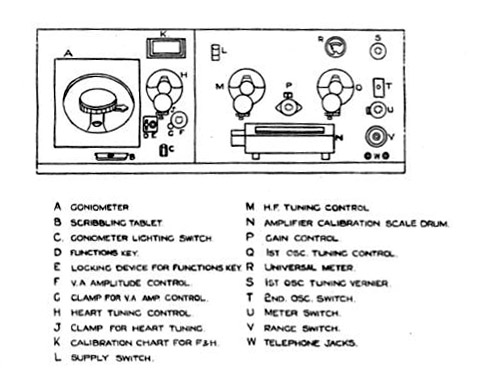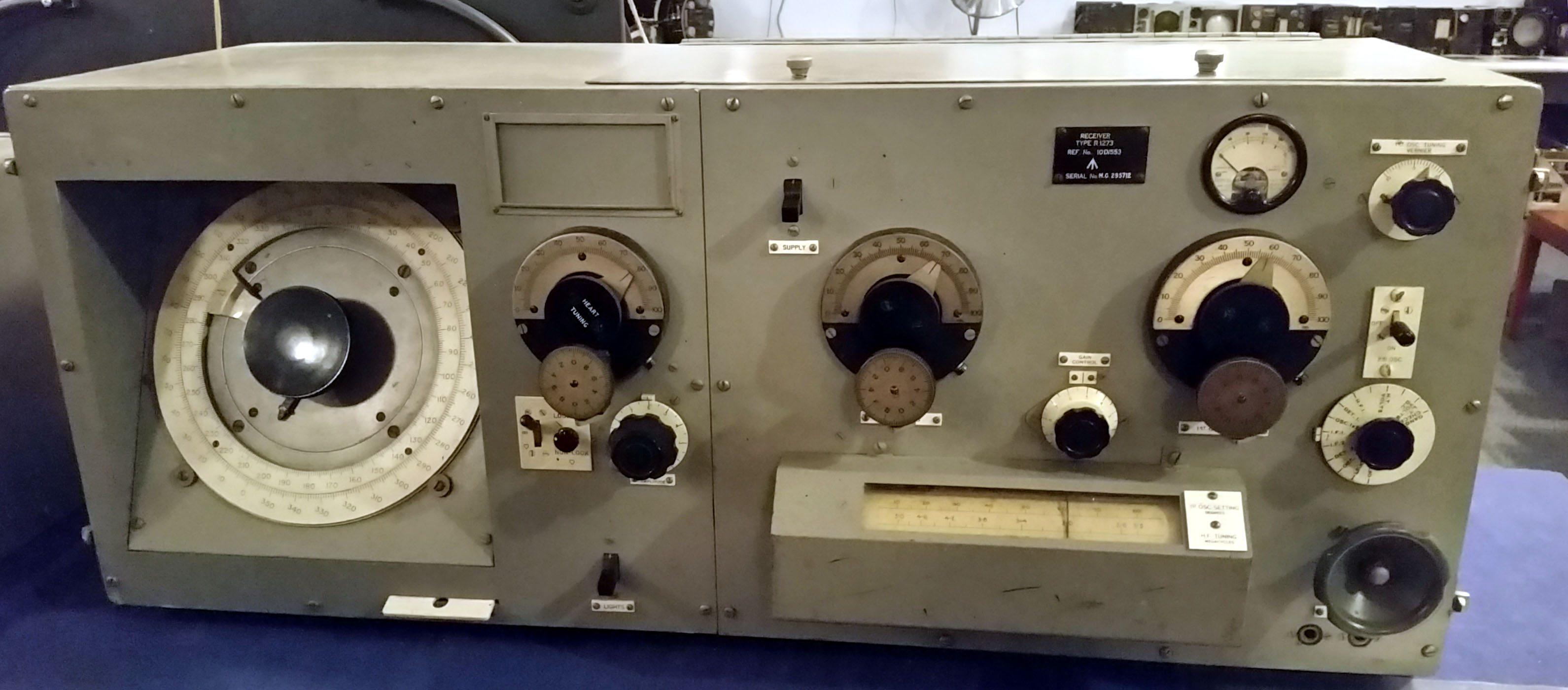 |
| DFG25 receiver control panel. (Image provided by John Wise). |
Frequency range: 2.5 to 9 .0 MHz only. (120 ~ 33.3 metres)
Circa - Interpretive evidence suggests 1931.John Wise provides this extract from the DFG25 docs and some comments.
"Apparently the DFG25 was designed to be a mobile short wave direction finder although the aerial arrangements make it look like a very permanent shore based rig. The aerial system consisted of four vertical tubular mast aerials mounted on insulators and erected at the four corners of a square. The masts were in 3 sections, supported by steel stays, broken up by insulators. The masts were 22 ft (6.7m) high and the standard spacing between masts was 28 ft (8.5m) on the diagonal. A vertical aerial for sensing was supported at the intersection of a special rope triaties stretched between opposite pairs of masts. All the spaced aerials were connected to the receiver at the centre of the site by a special, low-loss, steel taped feeder buried in the ground to a depth of not less than one foot. This seems unusual for a mobile system.
When erecting the aerial system it was desirable, but not essential, to erect one spaced aerial in the true North-South direction which obviates an adjustment of the goniometer.
An earth plate was buried at the centre of the site and plates were also buried in line with the feeders near the base of each mast aerial. The central earth plate was used for earthing the receiver and the outer plates were boned to the outer covering of the feeder cables at the mast bases.
 |
| DFG25 receiver control panel. (Image provided by John Wise). |
The information comes from a buff, steel clipped folder marked: Marconi Reference No. 0780 with pages measuring 13.5 x 8 inches. It appears to be undated, however, the top of page 1 has the simple notation 41231. This might be interpreted as 4th December 1931. It was about this time that HD D/F systems were being developed in an era where all the earlier ones were limited the VLF, LF and MF bands up to about 3 MHz max."
 |
| DFG-25/R1273 receiver. Download image to enlarge. (Photo by Alf Fisher G3WSD) |
Contributors and Credits:1) Alf Fisher al(at)blunham.com>
Dec 20/20